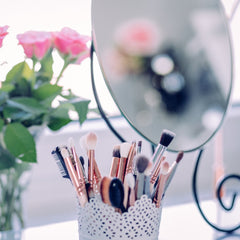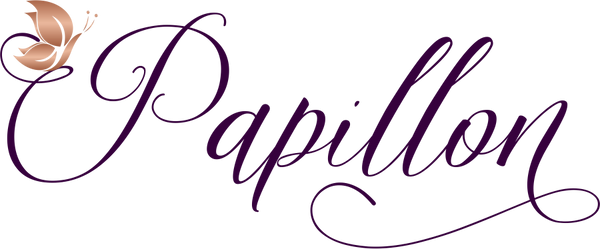
Isn't it great that there are so many organic skincare and clean beauty products options on the market today? You can easily buy clean beauty products and skincare from your local drug store, Amazon and even Sephora! But are these products really clean and organic as they claim?
I am sorry to break it to you, but organic doesn't always mean organic!
When I started my switch to clean beauty products a few years ago, I was very overwhelmed with all the options and all the claims! Prior to my organic skincare switch, I was your typical average consumer that didn't read products ingredients and just went with what was stated on the front of the label! However, after I educated myself about toxic ingredients to avoid, I became disheartened and mortified with the ingredients that were still present in products that claimed to be organic and clean! First I became enraged that companies were deceiving consumers, and then I made it my mission to educate consumers about Greenwashing (which means that some products/brands make claims of being organic/green/natural while containing ingredients that are harmful and toxic).
The more research I did, the more angry and frustrated I got! I learned that there is not much regulation, believe it or not, on the ingredients that go in the beauty products here in the US! As a consumer, I assumed that anything that's on a retail shelf, whether it's in a drugstore or a department store is natural and that it's safe for me. I mean not necessarily "natural," but that it's safe for me. I just assumed if it's being sold, then it must be safe, and all the ingredients must be not harmful or toxic. Well, I was wrong…….
As I started doing research, as I said, I learned that is not the case. There are many ingredients in beauty and skincare products ( even ones that claim to be organic ) that I personally don't want on my body, my face and my eyes. In fact, there are 11 ingredients that are still being used in the beauty products in the US that are actually banned in Europe, completely banned, but here in the US, we still use them. In Europe, there are 1300 ingredients that are banned, but some of them are common sense - I mean it's assumed that they're not going to be in beauty products, but there are specifically eight ingredients that we use here in the US in our beauty products that are completely banned in Europe.
The other thing that I really, really wanted to stress is there's no sort of legal rule or regulations of the companies and their use of the words 'organic,' or 'natural,' or 'pure.' Any company out there can use the word 'organic' or can use the word 'pure' or 'natural' on their product. Anyone! There's no regulation, there's no law, and that is SCARY! As a customer, you buy a product labeled organic and you assume that it is organic but, unfortunately, it's not always the case.
Many companies nowadays are using the word organic or natural as a marketing gimmick because they know that consumers are becoming more conscious about ingredients and are seeking safe, natural and organic skincare and beauty products.
My goal from writing this blog is not to scare you but to educate you and equip you with information and tools/strategy to become a more savvy consumer when it comes to buying green beauty products. I understand that different consumers have different tolerance level or standards in terms of what ingredients they are willing to use and my hope that this information will give you guidelines when you are out shopping.
Don't get me wrong. I'm not saying that everyone needs to buy organic products. It's your choice. You might not want to buy organic. But what I'm saying is that, if you intended to buy organic products and you spent your hard earned money on natural organic skincare and beauty then you shouldn't be misled or deceived by brands that make false claims thinking that what you bought is organic when it's not.
Here are my five tips to ensure what you are buying is organic/natural :
1. Read the Ingredients List:
I know! I know! Who has time to read the ingredients list, especially with all the options and selections on the market? But honestly, you are doing yourself a disservice if you don't. Reading the ingredients list is the best way to learn if there are harmful or unacceptable ingredients - for you - in the product. Unfortunately, with this era of greenwashing, you can't just buy a product that is labeled natural or organic and assume that they are green/clean. You have to read the ingredients list and decide for yourself if you are comfortable with those ingredients. Some customers might be okay with them, and some consumers might be completely comfortable with ingredients that you or I are not satisfied with. All I'm saying is make the decision for yourself. Pick up the product, read the label and if you don't recognize an ingredient, you can Google it or post a question on a Facebook Green Beauty Group (there are so many great green beauty groups with a supportive and knowledgeable community). You can even post a screenshot of the ingredients list, and they will tell you if there are any red flags and suggest other products that might be better based on your criteria. Ultimately, you have to make the decision for yourself because you know what you are comfortable with putting on your skin and what ingredients work for you or not. For example, someone might be ok with products with essential oils, and someone else might not be ok with them because they have sensitivity.
2. Look for USDA Certified Organic Seal:
Ok, so if you really don't want to read the ingredients list, a sort of way around this is to look for products with USDA certified organic seal. That pretty much tells you whether the company went through the certification process to be labeled organic and they're not just throwing it out there as a buzzword, or a marketing term. Keep in mind though that to be labeled organic, the ingredients list should contain a minimum of 95% certified organic ingredients. So, this is a simple step - look for the USDA certified label or any other reputable certification seal, such as MadeSafe* that can give you the peace of mind and assurance that the product you are purchasing is, in fact, organic and made with non-toxic ingredients. ( *MadeSafe is a non-profit organization, and many people think that this organization is actually doing the job of the FDA, they ensure the certification process of companies and products to make sure that the ingredients are safe to be used. If a product is certified by them, you can rest assured that it is clean, safe and is void of preservative, additives, toxic chemicals or any other harmful ingredients).
3. Check the Price:
Price is a significant indicator of whether a product is actually certified organic or not! I'll just give you an example: If you're buying a certified organic facial oil and the price seems very reasonable/low, then that should be a red flag! I saw an oil sold on Amazon and labeled organic listed at $12! I know for a fact that the COST for this specific oil is $10 for that quantity. So how can they sell it on Amazon for $12 if it cost them $10? This should tell you something. There's no way they can sell a natural product for $12 if it cost them $10. They still have to bottle it, to design/print labels and design/ source packaging, they still have pay to ship it to their warehouse/Amazon warehouse, they have to spend money on marketing and advertising and so forth. So there's no way the oil they are selling is certified organic as the label claims. Again, do the math. If it cost them $10 and they're selling it at $12, there's no way it is certified organic.
4. Find Brands and Companies that you Trust:
This is ultimately the easiest and my favorite way of ensuring that I am buying a green or a certified organic product! Find two or three companies that are reputable and that you trust and stick with them. There is a lot of brands and products out there, and you will literally drive yourself crazy if you're going to check on every single label so finding few brands that you trust can be a life and time saver. If you know a company is transparent and they're authentic with their messaging and ingredients, stick with them, and only buy products from them until you find other products or companies that you're comfortable with. New beauty products and brands come on the market every single day, and it's hard to keep up. Like I said earlier, for the average consumer that doesn't know much about ingredients, it's crazy. I mean, you read the labels, and you can't even pronounce some of the ingredients. So find two, three companies that you trust, stick with them, buy their products and you know that you're getting safe ingredients and natural ingredients. The only caveat to this step is if you know that you have a sensitivity to specific ingredients then you can't afford not to read the ingredients list carefully. 5. Use Trusted Resources such as Think Dirty and EWG: Using trusted resources like ThinkDirty app or EWG website that have a database of products that you can go through. Either type in a product that you would like to purchase, for example, mascara and they will give you a list of products that got their seal of approval – meaning that they are clean and void of any toxic or harmful ingredients. Alternatively, on ThinkDirty app, you can scan or enter the name of a specific product, and they will give you a rating for that product based on the ingredients list. ThinkDirty app is handy if you're out shopping and you want to quickly check on a product to see if it is safe.
BONUS! Shop from trusted websites and retail stores.
There are quite a few very reputable and trusted online stores or retail stores that do all the research for you and only carry products that are clean and don't contain any harmful ingredients. Some of the stores that I highly trust and recommend are Organic Bunny website, Credo Beauty, Follain and The Detox Market.
So here you have it! Are there any other resources that you like and trust? Please share them in the comments below.



